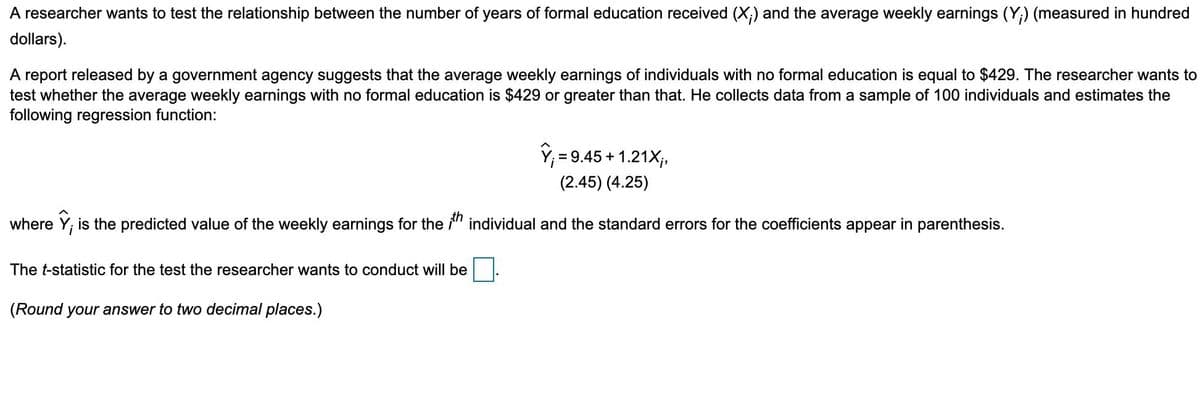A researcher wants to test the relationship between the number of years of formal education received (X;) and the average weekly earnings (Y) (measured in hundre dollars). A report released by a government agency suggests that the average weekly earnings of individuals with no formal education is equal to $429. The researcher wants test whether the average weekly earnings with no formal education is $429 or greater than that. He collects data from a sample of 100 individuals and estimates the following regression function: î, =9.45 + 1.21X, (2.45) (4.25) where Y, is the predicted value of the weekly earnings for the " individual and the standard errors for the coefficients appear in parenthesis. The t-statistic for the test the researcher wants to conduct will be (Round your answer to two decimal places.)
Correlation
Correlation defines a relationship between two independent variables. It tells the degree to which variables move in relation to each other. When two sets of data are related to each other, there is a correlation between them.
Linear Correlation
A correlation is used to determine the relationships between numerical and categorical variables. In other words, it is an indicator of how things are connected to one another. The correlation analysis is the study of how variables are related.
Regression Analysis
Regression analysis is a statistical method in which it estimates the relationship between a dependent variable and one or more independent variable. In simple terms dependent variable is called as outcome variable and independent variable is called as predictors. Regression analysis is one of the methods to find the trends in data. The independent variable used in Regression analysis is named Predictor variable. It offers data of an associated dependent variable regarding a particular outcome.

Trending now
This is a popular solution!
Step by step
Solved in 2 steps








